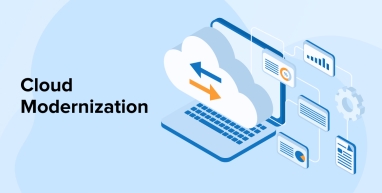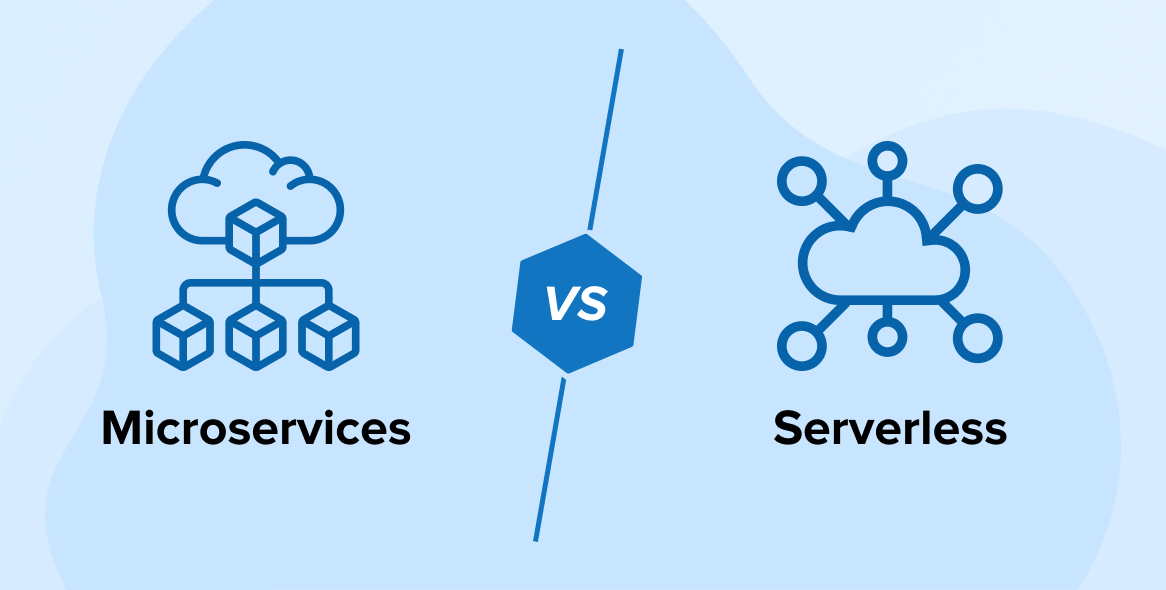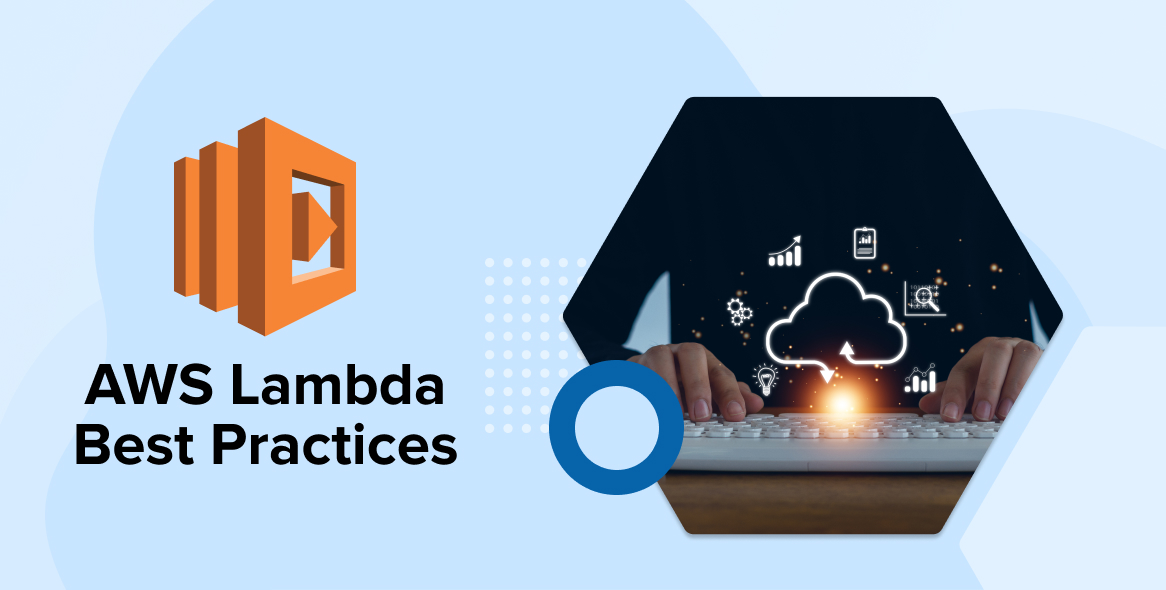
Cloud modernization isn’t just about migrating applications, workloads, and databases to the cloud. Businesses with cloud applications often fail to meet the user requirements. In such cases, you need to optimize resources to enable your application with advanced features that meet changing business objectives and user requirements.
This approach is much more complex than cloud migration. A reliable software development company can guide you through the complexities and ensure your project delivers impactful outcomes. This article explores the concept of cloud modernization, its importance, limitations, strategies, use cases, and how it differs from cloud migration.
1. What is Cloud Modernization?
Using cloud computing and cloud-based technologies to transform an organization’s legacy IT infrastructure is known as cloud modernization. This involves migrating data and applications from legacy systems to the cloud, refactoring legacy architectures, and making workflows cloud-native.
For example, refactoring a monolithic app into a microservices architecture is an example of cloud modernization. This process can be time-consuming, complex, and have high initial costs, but it helps businesses stay competitive, improve operational efficiency and resource utilization, and deliver a better user experience.
2. The Importance of Cloud Modernization
Cloud modernization becomes a necessity for growing businesses and enterprises. Legacy systems and traditional architectures are no longer enough or efficient for meeting modern requirements. Organizations must be fast and flexible to respond to changing market dynamics, and cloud modernization can provide an edge in such conditions. Below are some benefits of cloud modernization.
2.1 Accessibility
Cloud modernization enables users to access apps, data, and systems from anywhere with an internet connection. It removes the restraints of on-premise infrastructure, improving employee productivity and collaboration. Additionally, the cloud helps deliver an enhanced experience and improved customer engagement through secure, seamless access to the organization’s products and services.
2.2 Agility
With cloud resources, organizations can adjust to changing requirements easily and effortlessly. Cloud modernization allows the use of advanced capabilities like AI/ML and big data to explore new business models, driving innovation and growth. Consequently, a company’s market position improves significantly.
2.3 Cost-Effective
Cloud modernization optimizes your infrastructure to reduce the resource requirements of the workloads. Combined with flexible pricing models, this approach ensures you pay only for the resources you use and can often do more with fewer resources. As a result, you don’t need to rent or buy extra resources to cover peak times that remain idle for much of the year and consume a significant portion of your budget.
2.4 Flexibility
Cloud computing infrastructure is highly flexible because it is easy to scale resources up or down to meet changing needs. The cloud architecture also offers a range of services like SaaS, PaaS, and IaaS, providing organizations with varying levels of control. Moreover, cloud modernization supports hybrid and multi-cloud deployments, helping to avoid vendor lock-in and enhance system capabilities.
2.5 Scalability
Improved scalability is an obvious advantage of cloud computing. Adopting a well-planned cloud modernization strategy helps you create a system that quickly responds to changing resource requirements. If there is a sudden spike in demand, you can rapidly provision the resources needed to support additional workloads or increased network traffic. As a result, your system avoids downtime, and you don’t pay for idle resources during off-peak times.
2.6 Security
Cloud architecture includes a suite of security features like intrusion detection, access control, and encryption, to protect an organization’s data. Cloud providers maintain teams of experts who follow current security standards and guidelines, understand modern cloud threats, and know how to mitigate them.
Cloud modernization also improves visibility into the apps and their data. For example, the cloud platforms provide detailed logs of activity in their environments, which helps identify suspicious behavior and supports incident investigations.
2.7 Reliability
Modernization involves distributing your cloud across multiple geographic hosting locations and using load balancers. This approach ensures high availability and reliability. Together, these measures help maximize uptime and reduce the risk of outages caused by disasters and spikes in web traffic.
3. Cloud Modernization Challenges
While cloud modernization has some clear benefits that can boost your business growth, there are also a few challenges along the way. Understanding them will eventually help plan a strategy to overcome them.
3.1 Workflow Disruption
You must train your team to use cloud-native and distributed apps. When modernizing the app, some traditional, inefficient processes must be retired and replaced by new ones. This transition can reduce business efficiency until the staff adapts to the new processes. If your app has external users, their experience may be affected as well.
3.2 Incompatible Legacy Systems
A legacy system may be unable to adapt to a cloud environment. Some monolithic architectures depend on outdated software and tightly coupled modules with increasing interdependencies. While you can easily replace these systems, you risk losing a few legacy functionalities. Moreover, extracting years of data and converting it for the new system is often complex and carries a risk of data loss.
3.3 Data Security and Compliance
Migrating data from legacy systems to cloud native apps presents serious challenges. You must ensure security and regulatory compliance, especially in finance or healthcare. To protect data, implement robust measures like regular audits, strong encryption, multi-factor authentication, and strict access controls. Many organizations adopt a zero-trust security model that verifies every user and device by default. Continuous monitoring and assessments help ensure compliance requirements are met consistently.
3.4 High and Unpredictable Investment Costs
Upfront costs for cloud modernization can be high because the process involves training, reengineering, and migration. Companies must invest in cloud services and infrastructure, and if needed, third-party expertise. The scale and complexity of an existing legacy system are the biggest factors affecting modernization costs, along with ongoing operational costs, data storage, and data transfer fees.
It is difficult to predict every cost before the project starts because problems may occur during data transfer or due to unexpected resource consumption. Plan for long-term scaling requirements and include contingency buffers in your budget.
3.5 Resistance From Employees or Stakeholders
Some challenges may not stem from the technical aspects of the project but from the changes that modernization brings. People may experience disruption of established workflows, job security concerns, or financial considerations. This resistance to cloud adoption can slow down the process. Organizations must prepare a plan in advance to raise awareness and have clear communication about the advantages and disadvantages of cloud modernization. Providing training for employees also helps ease the transition.
4. Cloud Modernization Strategies
Optimizing your cloud system requires a careful approach and comprehensive planning. You may need to transform your apps, data, processes, and infrastructure to make your cloud system flexible, resilient, and future-ready. Below, we discuss the core components that need modernization to ensure effective cloud optimization.
4.1 Application Modernization
Update or re-engineer the existing app running in your cloud environment to enhance its performance. Make the app more resilient, scalable, and agile using approaches like microservices architecture and containerization. Organizations can streamline and speed up development and deployment cycles by breaking monolithic apps into small, manageable services. This improves software reliability and makes it easier for businesses to add new features, fix issues, and respond to user feedback to improve the user experience.
4.2 Infrastructure Modernization
Infrastructure modernization is the process of replacing on-premises hardware and legacy systems with cloud-native infrastructure to minimize physical footprint and improve operational flexibility. Organizations pursue infrastructure modernization to reduce downtime, improve system availability, and manage resources more efficiently.
Cloud infrastructure makes it easier to deploy, monitor, and scale apps. It reduces the burden on internal teams and enables organizations to adapt to changing requirements seamlessly without disrupting services.
4.3 Database Modernization
This method focuses on implementing cloud-based upgrades to an app’s databases. It applies to cloud, hybrid, and multi-cloud setups as well as cloud-based data storage. Cloud modernization allows your app to use a fully managed cloud database with automatic fault monitoring, cross-region data replication, and automated backups. Database modernization also helps you follow data-management best practices and comply with applicable regulations and industry standards for data security.
4.4 Process Modernization
In addition to changes to the app, infrastructure, and databases in your cloud architecture, the development team must transform the processes that manage them. Only then can you fully realize the benefits of cloud modernization and maintain the resulting business efficiencies.
To execute process modernization, first analyze existing processes and identify redundant ones. Implement automation wherever possible and create new processes to accommodate cloud development and deployment workflows. Process modernization is a critical aspect of an overall modernization strategy because it helps you maximize the value of your cloud deployment.
5. Cloud Modernization Use Cases
A cloud modernization approach provides organizations with a variety of use cases, from rehost to replatform. This section discusses a few common instances.
5.1 Legacy App Modernization
Repurpose or upgrade existing software using modern cloud platforms. This supports business objectives while improving cost efficiency, performance, and availability.
5.2 UI UX Modernization
Sometimes, it is not necessary to modernize the entire app. Businesses can achieve their goal by redesigning the front end. UI/UX modernization improves customer engagement and conversion rates, boosting business outcomes. A modern, user-friendly interface helps businesses improve market positioning.
5.3 Backup and Disaster Recovery
Cloud adoption enables a robust disaster recovery plan. Even basic cloud adoption provides a cloud-integrated offsite backup storage that is cost-effective and easily scalable on demand. Cloud backups can also be repurposed for analytics, test/dev, and ransomware recovery.
5.4 High-Performance Computing
Cloud modernization empowers businesses to address complex compute challenges. Cloud solutions have robust, advanced computing capabilities with flexible and cost-effective infrastructure that scales to meet changing requirements. Large-batch workloads experience shorter queue times, and you pay only for the resources you use, enabling faster innovation with on-demand, high-performance resources.
6. Cloud Modernization vs. Cloud Migration
Many people mistake cloud modernization for cloud migration, but they are not the same. While migration is indeed one of the aspects of modernization but it is not the only one. The primary purpose of cloud modernization is to transform existing cloud or on-premise infrastructure into a modern, cloud-native environment with improved security, scalability, availability, reliability and cost-effectiveness.
| Factors | Cloud Modernization | Cloud Migration |
|---|---|---|
| Scope | Redesigns and optimizes apps for a cloud-native environment. | Mainly includes transferring existing systems and applications to the cloud. |
| Objectives | Utilizes cloud-native features to enhance efficiency, performance, and scalability. | Replicates existing functionalities in the cloud. |
| Approach | Refactor, re-architect, or rebuild the applications to reap the benefits of cloud services. | Uses the “lift and shift” method to move the app as-is to the cloud. |
| Legacy systems | Transforms legacy systems to make them more agile and scalable. | Moves legacy systems to the cloud with minimal change; may carry existing limitations into the cloud. |
| Long-term strategy | A long-term strategy that enables continuous improvement and innovation using cloud technologies. | A shorter-term solution focused on relocating workloads to the cloud; may be transitional. |
| Requirements | Needs domain-specific expertise, more time, and high upfront costs. | Needs less time, expertise, and resources. |
7. Conclusion
Cloud computing is more beneficial than legacy computing systems. But simply migrating your IT infrastructure to the cloud won’t deliver those benefits by itself.
Adopting a cloud native architecture through optimization of apps, infrastructure, databases, and processes helps maximize your business ROI. Cloud modernization is complex, but expert guidance can make the process much easier. Feel free to contact us for any queries and assistance.
FAQs
What is cloud modernization?
The process of migrating, updating, and redesigning on-premises systems or optimizing an existing cloud environment is known as cloud modernization. Restructuring your apps and systems for cloud-native environments helps improve operational efficiency, app performance, and cyber resilience.
What is the difference between cloud migration and cloud modernization?
Cloud migration is about moving an app, its workloads, and databases to the cloud as they are. The cloud modernization process involves redesigning, rebuilding, re-architecting, or refactoring apps to take full advantage of cloud services.
What are the 7 R’s of Cloud modernization?
Retain, rehost, replatform, refactor, repurchase, relocate, and retire are the seven R’s of cloud modernization.






Comments
Leave a message...